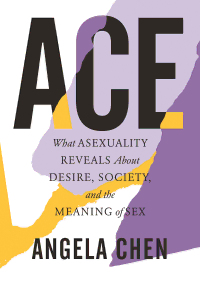Table Of ContentCover Page: A
Title Page Page: i
Dedication Page: v
Contents Page: ix
Author’s Note Page: xi
Part I: Self Page: 1
Prologue Page: 3
Chapter 1: Arriving at Asexuality Page: 5
Chapter 2: Explanation Via Negativa Page: 17
Chapter 3: Compulsory Sexuality and (Male) Asexual Existence Page: 33
Part II: Variations on a Theme Page: 47
Chapter 4: Just Let Me Liberate You Page: 49
Chapter 5: Whitewashed Page: 68
Chapter 6: In Sickness and in Health Page: 85
Part III: Others Page: 105
Chapter 7: Romance, Reconsidered Page: 107
Chapter 8: The Good-Enough Reason Page: 136
Chapter 9: Playing with Others Page: 150
Chapter 10: Anna Page: 171
Chapter 11: Where Are We Going, Where Have We Been? Page: 180
Thank You Page: 189
Further Reading Page: 190
Notes Page: 191
Index Page: 203
About the Author Page: 210
Copyright Page: iv
Description:An engaging exploration of what it means to be asexual in a world that’s obsessed with sexual attraction, and what the ace perspective can teach all of us about desire and identity. What exactly is sexual attraction and what is it like to go through life not experiencing it? What does asexuality reveal about gender roles, about romance and consent, and the pressures of society? This accessible examination of asexuality shows that the issues that aces face—confusion around sexual activity, the intersection of sexuality and identity, navigating different needs in relationships—are the same conflicts that nearly all of us will experience. Through a blend of reporting, cultural criticism, and memoir, Ace addresses the misconceptions around the “A” of LGBTQIA and invites everyone to rethink pleasure and intimacy. Journalist Angela Chen creates her path to understanding her own asexuality with the perspectives of a diverse group of asexual people. Vulnerable and honest, these stories include a woman who had blood tests done because she was convinced that “not wanting sex” was a sign of serious illness, and a man who grew up in a religious household and did everything “right,” only to realize after marriage that his experience of sexuality had never been the same as that of others. Disabled aces, aces of color, gender-nonconforming aces, and aces who both do and don’t want romantic relationships all share their experiences navigating a society in which a lack of sexual attraction is considered abnormal. Chen’s careful cultural analysis explores how societal norms limit understanding of sex and relationships and celebrates the breadth of sexuality and queerness.

